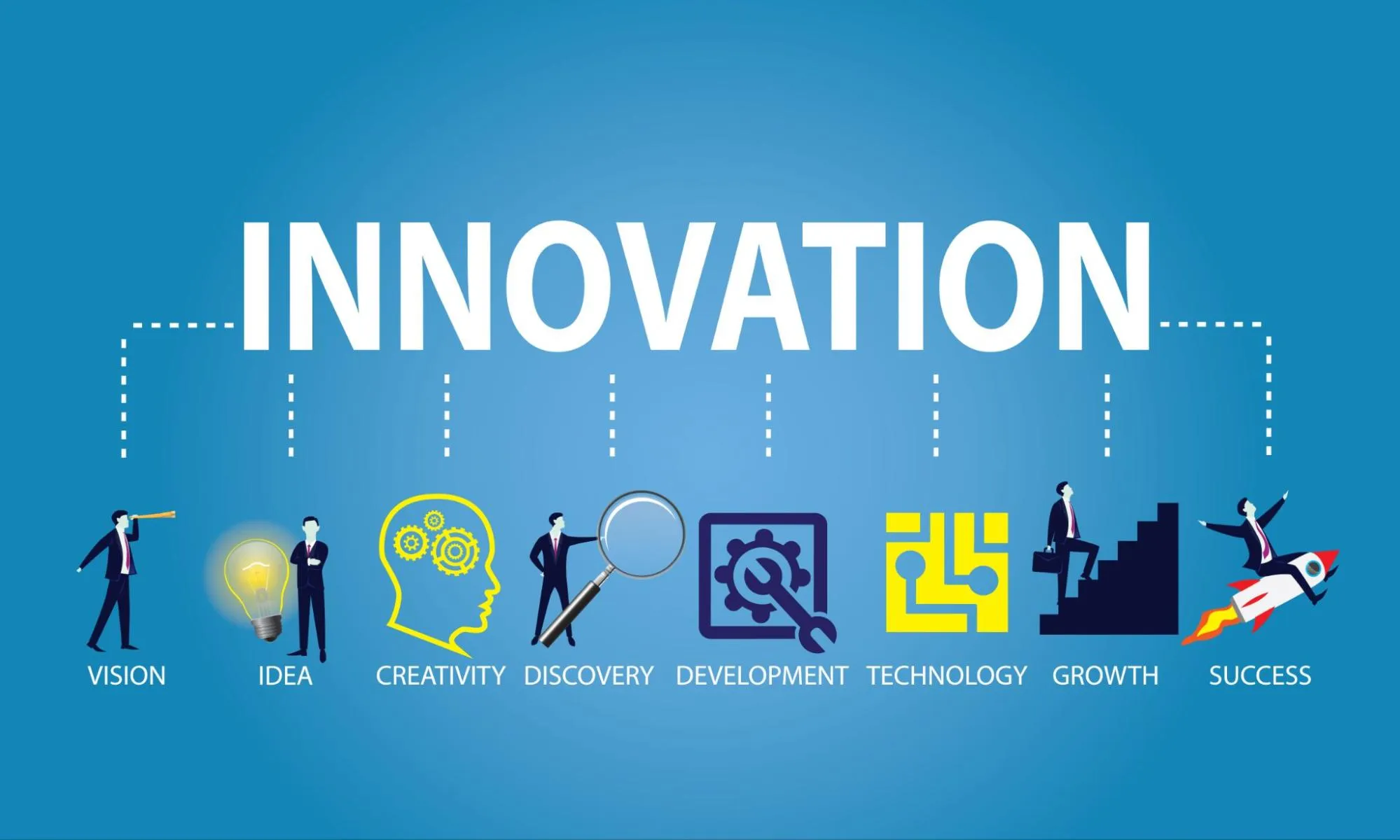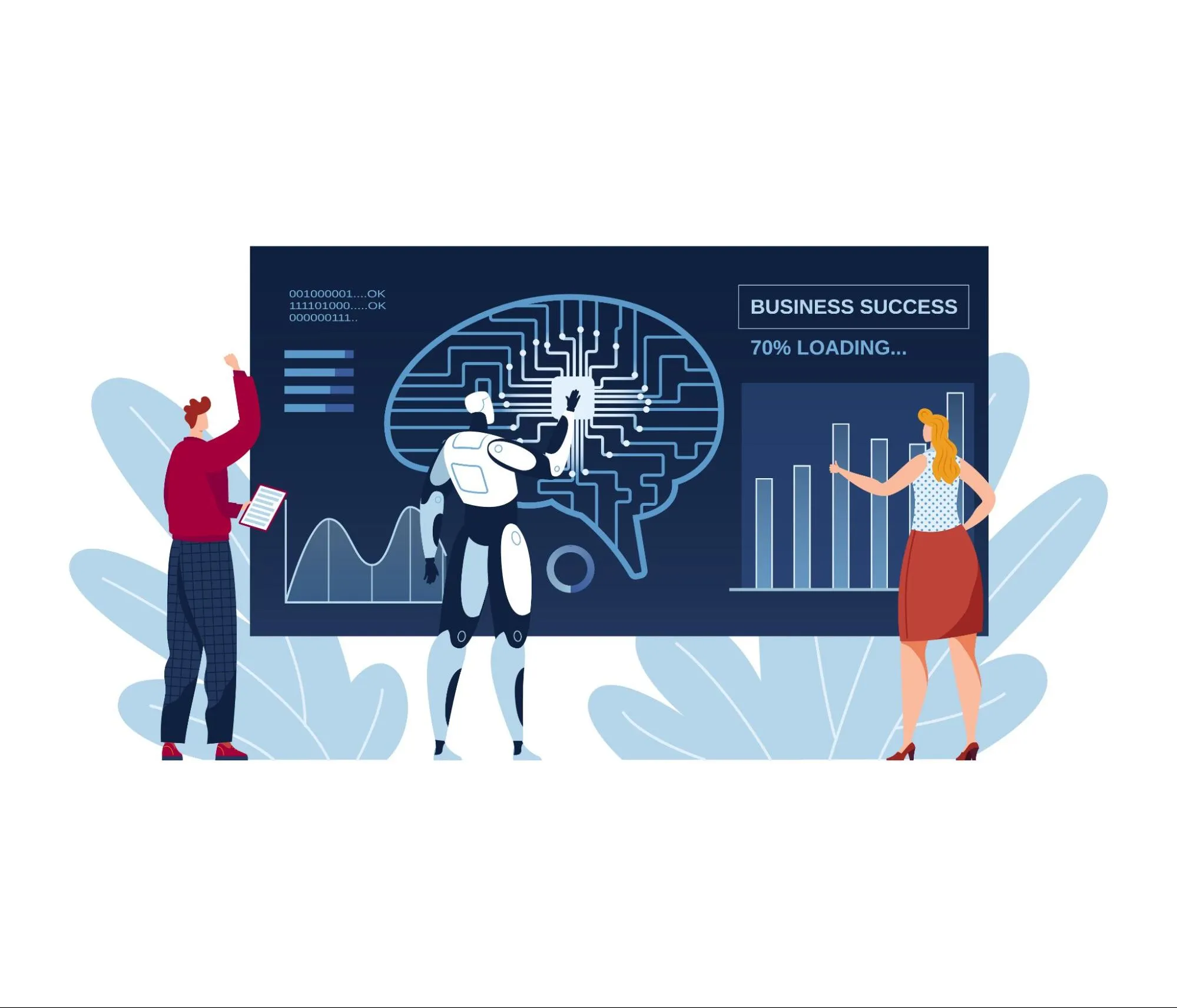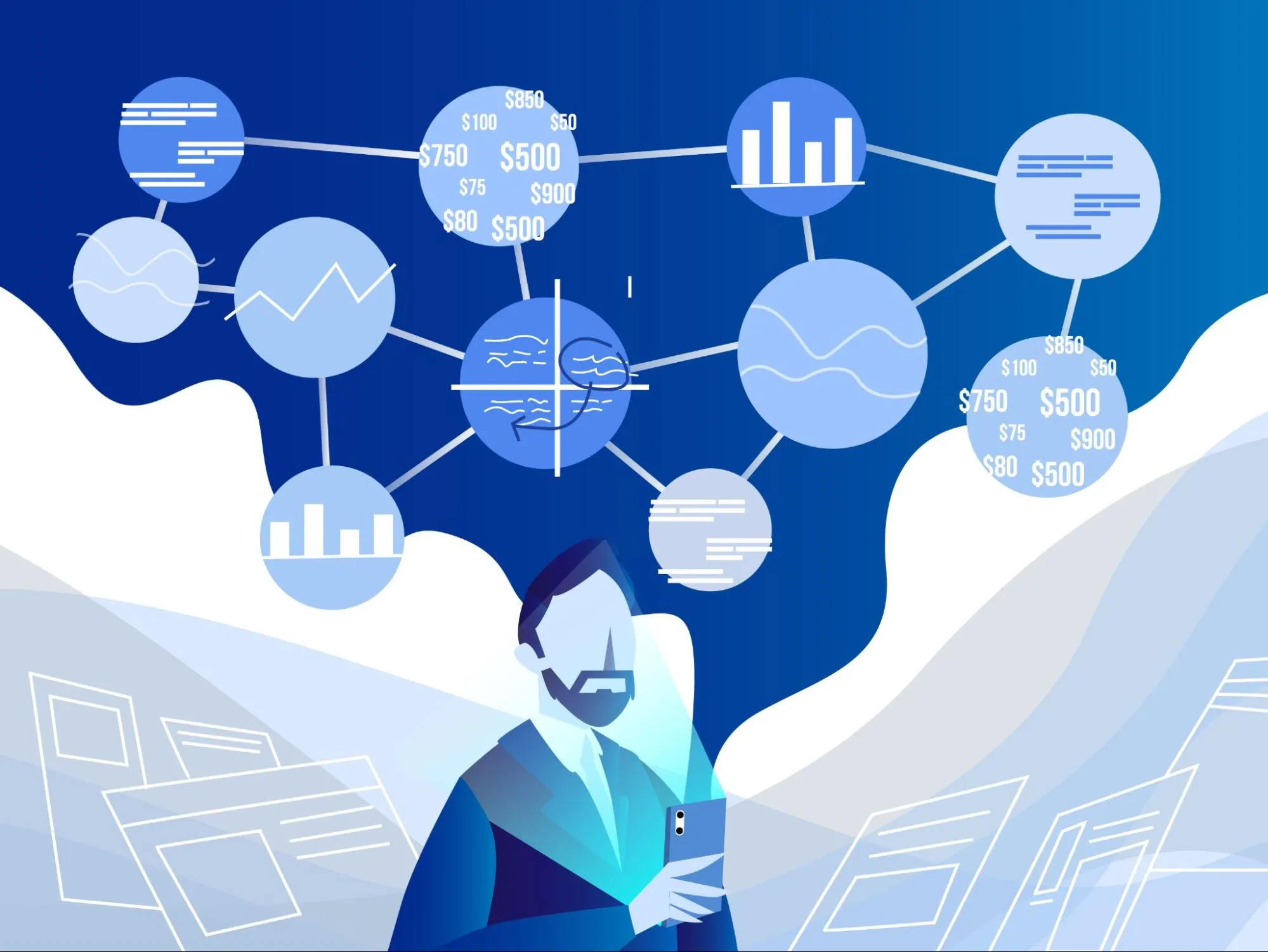Tech Innovations Every Business Leader Needs to Know

Are you ready to ride the wave of technological transformation?
The churning sea of innovation keeps growing
and growing. As a leader, you are the captain of the ship, and each turbulent wave symbolizes a new technological
advance. Today, the question is not just how to stay afloat despite these waves but how to identify the novelties
that can take your business into uncharted areas of business prosperity.
Embracing Data for Strategic Decisions
Through various sources, accurate real-time data insights form the basis for new and exciting strategies. Leaders are obliged to predict world trends in the market, as well as to react preventively to them using modern forecasting models as well as machine learning.
Utilizing these vast amounts of data requires a sophisticated infrastructure for agility and scalability. Managers who invest in prestigious tools and platforms designed to process vast amounts of complex data put their organization in the vanguard of informed decision-making.
The Power of Revenue Intelligence
Revenue intelligence transforms data into understanding, unlocking actionable insights to drive financial growth and enhance decision-making processes.
With revenue intelligence, every customer interaction becomes a strategic opportunity to fuel growth and strengthen the bottom line.
This data uses artificial intelligence to aggregate and analyze sales data, customer interactions, and market trends. At the same time, they discover patterns that enhance the sales strategy and its execution.
Businesses with these capabilities benefit from enhanced customer engagement, optimized pricing strategies, and accelerated deal closing, which sooner or later must result in strong financial performance.
Choosing the proper revenue intelligence software is crucial. An ideal platform should integrate seamlessly with existing systems and provide comprehensive tools designed to analyze and interpret complex data sets. This ultimately empowers the company to make strategic decisions based on all this information.
Predictive Analytics and Business Forecasting
When we want to predict market behavior, consumer habits, and tendencies, as well as potential risks, predictive analytics comes into play. Organizations manage to process large amounts of data using machine learning techniques. Because of this, their insights possess a very high level of accuracy. From this, it can be concluded that predictive analytics leads companies towards the right strategic decisions and solutions.
Predictive analytics highlights the arrival of a new era in which past data, as well as current data, form strategies for the future. Organizations using this can anticipate new market trends and improve their operations. These insights are essential because they transform reactive strategies into proactive business models, which, as such, are equipped to deal with market dynamics.
For businesses to succeed beyond 2023, data-driven insights are essential. This view of analytics guides business leaders towards more intelligent business decisions based on real evidence. This improves organizational performance in this changing and volatile economic environment.
Revolutionizing Business Operations with AI
Thanks to sophisticated machine learning methods, AI increases efficiency, promotes innovation, and facilitates the making of difficult business decisions. It also helps businesses to recognize upcoming obstacles and challenges easily and quickly.
The structures of organizational operations have been drastically changed by integrating AI. This represents an important transition from traditional, outdated methods to new ways of working, which will prove to be necessary for prosperity in this industry. If a company manages to master AI, it opens the door to countless possibilities.
Automating Routine Tasks
When it comes to boring repetitive tasks, releasing the human factor becomes very important. It is important to note that this change does not deprive people of their jobs but enables them to increase their productivity in other ways.
Automation is an important factor in increasing business efficiency. Some of the examples where its role has proven to be much needed are inventory management, customer support, payroll, project accounting and budgeting, and many others. Once tedious and time-consuming, these tasks are now, thanks to automation, mastered with a high level of accuracy and consistency. Thanks to this, companies can now direct their human workforce towards new strategic initiatives.
AI-Driven Customer Insights
With access to huge databases at the same time, AI represents an unwavering impact on business. It recognizes patterns of consumer habits and interactions that would otherwise be unknown. Sellers now have a good chance to predict future consumer trends, while users unconsciously suggest it to them through algorithms tailored to them. This is an essential step towards the formation of personalized marketing strategies.
Recommendations tailored to each user will become the norm and not the exception. Companies enriched with advanced AI tools will provide users with exactly what they need, sometimes even before they know it themselves. This builds loyalty and encourages continued use.
These systems sift through user feedback, correspondence on social networks, purchase history, and many other data to ultimately reveal important insights and solutions. As the year 2023 passes by, companies are scrambling to use these tools to rise to the top of market relevance.

Fostering Enhanced Communication and Collaboration
In this extraordinary digital age, effective communication is essential because it enhances the connection between different teams. A virtual space has been created where ideas are constantly and seamlessly exchanged despite the physical distance. This is best achieved by integrating platforms such as Slack, Teams, Zoom, and many other applications that promote a culture of collaboration.
The integration of cloud-based services, which enables the sharing of documents in real-time, helps a lot in reaching the set deadlines. Due to the transition to remote jobs, these changes are necessary in order to establish business efficiency.
The Role of Online Engagement Platforms
In our interconnected world, complex platforms manage to collect large amounts of data and use it to enhance immersion and unique, tailored user experiences. In order to achieve brand loyalty, businesses use advanced analytics that helps them understand and predict user needs. As already mentioned, these platforms represent a critical point for processing user feedback, which ultimately results in better decision-making and improvement of the product itself.
Users are also now used to fast and significant interactions between different channels, which is why this change has seismic proportions. To stay relevant, businesses must enable omni-channel support.
Leaders who succeed in strategically embracing the new dimensions of these changes will capitalize on opportunities to apply insights into customer journeys. As next year approaches, those with a keen eye for intuitive design and meaningful data analytics will become the architects of consumer satisfaction and loyalty in this increasingly competitive environment.
Virtual Workspaces and Remote Teams
The arrival of sophisticated virtual workspaces has unequivocally transformed team dynamics and interpersonal interactions. Such digital forums have set a new standard for businesses looking for flexible practices and global talent reach.
These workplaces provide immersive experiences, something like a real office environment. They achieve this by using communication channels, project management tools, sharing resources, and in many other ways. Thanks to technologies such as AI and VR, these virtual rooms bring to life and simulate live business interactions, as well as create new cohesive work experiences. Businesses are now able to maintain a connected workforce despite geographic limitations.
In the examples of successful remote work scenarios, we can notice that the emphasis is on effective communication, trust-building processes, and adaptive leadership. Such changes had a key impact on the process of talent acquisition and talent retention, as well as improving productivity in general. This proves that a leader must foster a supportive virtual environment that is in line with modern work paradigms.
Exploring New Markets with Cutting-Edge Platforms
Virtual marketplaces have written off commercial geographic restrictions. Businesses can now dive into new, previously unreachable demographic segments and adapt to various demands.
In particular, blockchain technology and AI have entirely changed the approach and penetration of companies to international markets. These sophisticated tools provide unwavering insight into customer behavior, supply chain management, and predictive analytics, which later enables a new era of strategic development.
Moreover, “platformization” and “servitization” models are crucial facilitators in accessing diverse marketplaces. They provide agile frameworks for collaboration and exchange, reinvigorating the potential for cross-border commercial ventures.
The Importance of Deal Sourcing in Growth Strategies
Deal sourcing is an integral component of the growth strategy, which serves as the lifeblood of sustainable development and expansion efforts. It manages to identify lucrative business opportunities as well as accelerate strategic market penetration.
A proactive approach to deal sourcing increases the competitiveness of every business. It optimizes discovery evaluation and secures strategic partnerships and acquisitions. In order to get the most out of this complex process, businesses must rely on advanced market intelligence platforms, which are provided by companies like ZoomInfo. These companies offer essential insights into industry trends, potential partners, and a host of other benefits.
Deal sourcing promotes growth in the commercial market, where agility and flexibility are rewarded. It enables the discovery of new partnerships that extend the company's reach and improve overall effectiveness.
Leveraging Market Intelligence for Competitive Advantage
When being saturated with data becomes overwhelming, Market Intelligence (MI) becomes a compass that guides the decision-making process.
- Identify Emerging Trends: Detecting shifts in market dynamics allows businesses to turn swiftly.
- Benchmark Against Competitors: Understanding others' strategies enables more effective positioning.
- Customer Insights Analysis: Interpreting customer data predicts behavior and informs product development.
- Risk Mitigation: Assessing the market landscape helps foresee and cushion against potential disruptions.
- Resource Allocation Optimization: Data-driven insights ensure that investments yield the highest returns.

Adopting Sustainable Technologies for Future Growth
Integrating sustainable technologies into businesses is becoming more and more non-negotiable, thanks to consumer demands as well as legal regulations. What makes the company an important player in the market is embracing renewable energy sources, the energy efficiency of business processes, and the use of materials with a small carbon footprint. In this way, the business strengthens its brand and appeal to customers.
The transition to renewable energy sources is a moral obligation of every leader, but it is also an important strategic move. With the emergence of concepts such as the “circular economy,” where waste is reduced to a minimum, and resources are continuously reused, companies are finding innovative ways to reduce their negative impact on the environment while managing to cut costs.
In this light, resorting to sustainable technologies becomes more of an investment than an expense, as the company becomes future-proof in accordance with increasing environmental regulations.
Green Computing and Environmental Responsibility
With sustainable technologies, it is important to mention the emergence of green computing as a critical factor. It seeks to minimize the negative impact of the IT sector on the environment. This is achieved by promoting energy-efficient hardware, reducing electronic waste, and encouraging responsible user habits.
What constantly stands out as a question due to the impact of the energy footprint is: How do we adapt to the constant increase in the need for computing power and remain in line with the changes in the environment? One of the answers to this question is progressive steps such as the use of renewable energy and the design of energy-efficient data centers.
Environmental responsibility is also reflected in the lifecycle of computing equipment. Advances in production tend to increase the recyclability of components. At the same time, software is being developed whose purpose is to optimize the energy consumption of existing systems.
The development of the concept of 'green coding', where developers focus on creating energy-efficient software, emphasizes modern attempts to reduce the carbon footprint. It has been proven that even the smallest software improvements can have a significant impact on energy conservation on a global scale.
The Business Benefits of Sustainable Practices
Sustainable business methods have various benefits, such as increasing the reputation itself, ensuring customer loyalty, as well as long-term financial gains. These measures represent the dedication of business to the greater good, paving the way for social responsibility that is in line with modern consumers.
Leaders who follow sustainable practices show insight and innovation, which instills confidence in investors and stakeholders.
Companies that use these practices will gain access to new markets and demographics, especially among consumers for whom it is extremely important. This results in increased sales and strengthens the brand.
When sustainable methods are implemented in company strategies, this improves the public perception of the company, attracts talent, and increases complementarity with new regulations.
The Future of Work: Adapting to New Norms
In order for businesses to evolve in this modern digital age, the imperative must be placed on flexibility, decentralization, and sustainability. Organizational structures must implement new methods, remote work, and AI to remain competitive.
The conditions for hybrid work must be enabled, and a balance must be struck between onsite engagement and remote productivity.
Technology's Role in Supporting Flexible Work Arrangements
Technological advances have become the lifeblood of dynamic work environments, as they enable unprecedented flexibility. The advent of cloud computing enables employees to work seamlessly from any location, which can have a key impact on work-life balance.
High-speed internet connections made it possible to overcome the limits of traditional offices. The foundations of new cohesive virtual workspaces have been laid.
Various useful tools, such as project-tracking software, virtual private networks (VPNs), secure file-sharing services, and many others, have become necessary for business continuity in these modern virtual workspaces.
Tools for Managing Distributed Teams
In order to manage distributed teams, technological solutions that enhance collaboration and communication are necessary.
- Communication Platforms: Unify your team with tools like Slack and Microsoft Teams.
- Project Management Software: Applications like Asana, Trello, and Jira track progress and organize tasks.
- Video Conferencing: Services such as Zoom and Google Meet facilitate face-to-face interaction.
- File Sharing and Collaboration: Leverage Dropbox, Google Drive, or OneDrive for seamless file access and teamwork.
- Time Zone Synchronization: Tools like Every Time Zone prevent scheduling conflicts across different geographies.
- Virtual Private Networks (VPNs): Secure your team's internet connection and safeguard company data with advanced VPN features.
- Cloud Computing Services: Utilize Amazon Web Services or Microsoft Azure for scalable and flexible resource management.
- Cybersecurity Solutions: Protect your remote infrastructure with advanced security platforms like CrowdStrike or Norton.
Conclusion
Acceptance of these innovations will directly result in increased efficiency, collaboration, and capacity for the
amount of analyzed data. These are the pillars of a new, modern, resilient business ecosystem.
Embracing these
technological innovations is not just a matter of embracing new tools but a way of thinking that incorporates these
innovations deep into the fabric of business strategy. For savvy leaders, 'cutting-edge' is synonymous with the
competitive advantage that is mandatory for the ability to prosper in this modern, ever-changing digital world.